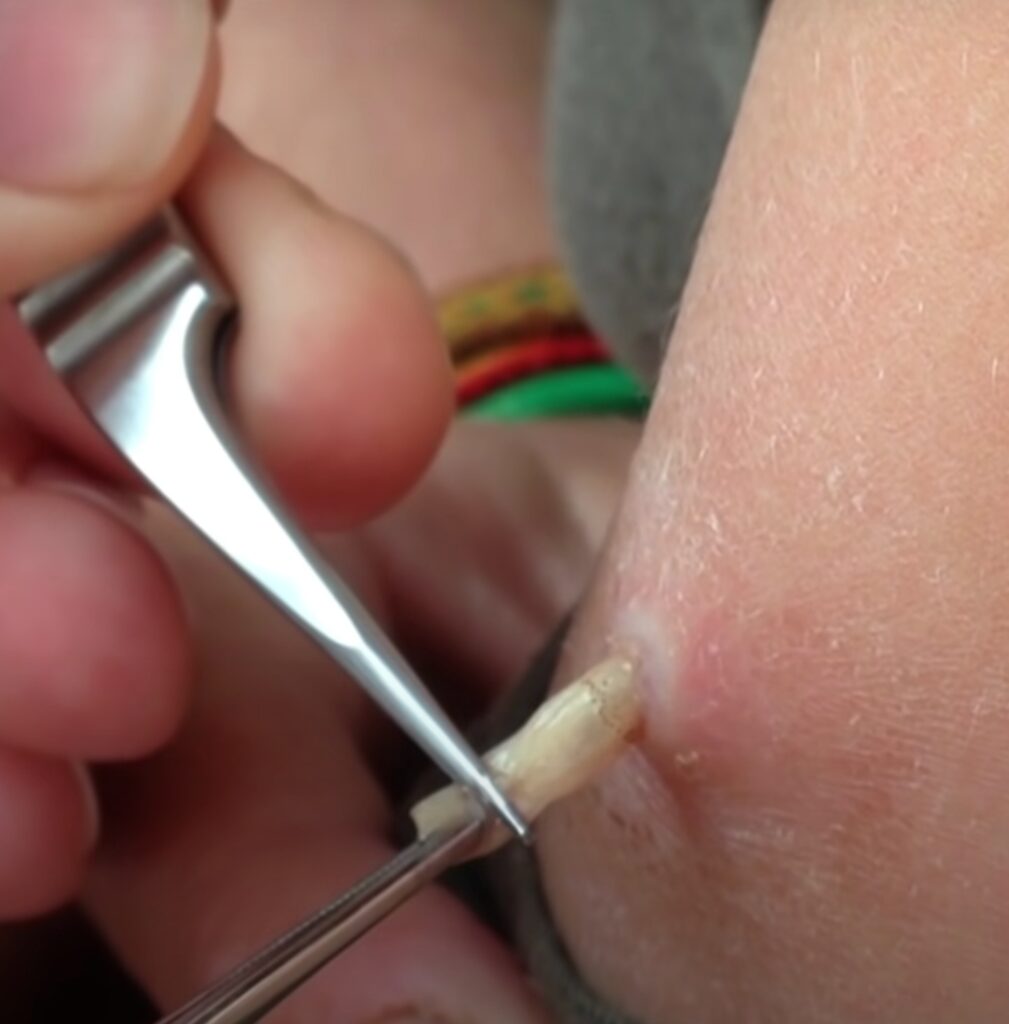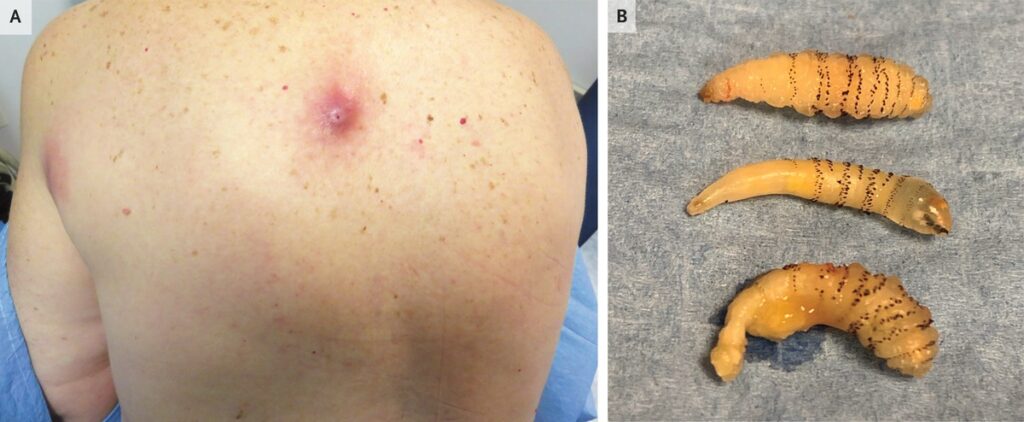If you’ve ever encountered the term “botfly,” your initial reaction might be a mixture of curiosity and discomfort. Botflies are parasitic insects that lay their eggs on mammals, including humans, which can lead to a rather unsettling experience. In this article, we’ll explore the world of botflies, their life cycle, and the methods of botfly removal.

Understanding the Botfly: A Brief Overview
Botflies, scientifically known as Oestridae, are a type of fly found in various regions around the world. These flies are unique due to their parasitic behavior during their larval stage. Unlike many insects that lay eggs directly on a host, botflies have evolved a different approach.
Female botflies deposit their eggs on the skin or hair of a host, which can range from livestock to pets and, in rare cases, humans. Upon contact with the warmth of the host’s body, the eggs hatch and the larvae burrow into the skin, where they begin their development.

The Botfly Life Cycle: From Eggs to Larvae
The botfly life cycle is fascinating yet rather unsettling. It consists of four main stages: eggs, larvae, pupae, and adults.
- Eggs: Female botflies are skilled at attaching their eggs to a host’s fur or skin. The body heat of the host triggers the hatching of the eggs, releasing tiny larvae that quickly seek refuge within the skin.
- Larvae: Once inside the host’s skin, the larvae create a small opening, allowing them to breathe and feed on tissue fluids. The larvae continue to grow while causing discomfort to the host due to their presence and activity under the skin.
- Pupae: After several weeks of development, the mature larvae emerge from the host’s skin. They drop to the ground, where they burrow into the soil to pupate. The pupal stage is a resting phase during which the larva transforms into an adult botfly.
- Adults: Once the transformation is complete, the adult botfly emerges from the pupa. The adult stage is short-lived, focusing on reproduction. Female botflies lay their eggs on suitable hosts, and the cycle begins anew.
Botfly Removal Methods: Dealing with the Uninvited Guests
Dealing with botfly larvae can be uncomfortable and, in some cases, pose health risks. Here are some methods used for botfly removal:
- Surgical Extraction: For humans and pets, surgical removal is a common method to extract the larvae. A medical professional carefully makes an incision over the larvae’s breathing hole and extracts the larva. Proper medical attention is crucial to prevent infection.
- Suffocation Technique: In some cases, applying petroleum jelly or adhesive tape over the breathing hole of the larva can suffocate it. This technique causes the larva to emerge from the skin in search of air, allowing for easier removal.
- Natural Expulsion: Occasionally, the body will naturally react to the presence of the larva, causing it to exit the skin on its own. However, this process can take time and cause discomfort.
- Vet Assistance: For pets and livestock, veterinarians often use techniques similar to surgical extraction to remove botfly larvae. Veterinarians may also prescribe medication to alleviate discomfort and prevent infection.
Preventing Botfly Infestations: Tips to Keep Unwanted Guests Away
Preventing botfly infestations is essential to avoid the discomfort and health risks associated with their larvae. Here are some preventive measures you can take:
- Regular Grooming: Regularly grooming pets and livestock can help prevent botflies from laying their eggs on their skin or fur.
- Protective Clothing: For humans spending time outdoors in botfly-prone areas, wearing protective clothing such as long sleeves and pants can reduce the chances of egg deposition.
- Insect Repellents: Using insect repellents, especially those designed to deter botflies, can provide an extra layer of protection.
- Environmental Management: Clearing areas of debris and maintaining a clean environment can help reduce the presence of botflies.
Conclusion: A Not-So-Welcome Visitor
Botflies might be fascinating in terms of their unique life cycle, but their parasitic behavior can certainly be unwelcome for hosts. Understanding botflies, their life cycle, and the methods of removal and prevention is crucial for minimizing the discomfort and health risks associated with these pests. If you find yourself dealing with a botfly infestation, seeking professional help is recommended to ensure safe and effective removal.




